Delfina Delettrez, at home on the Fendi farm
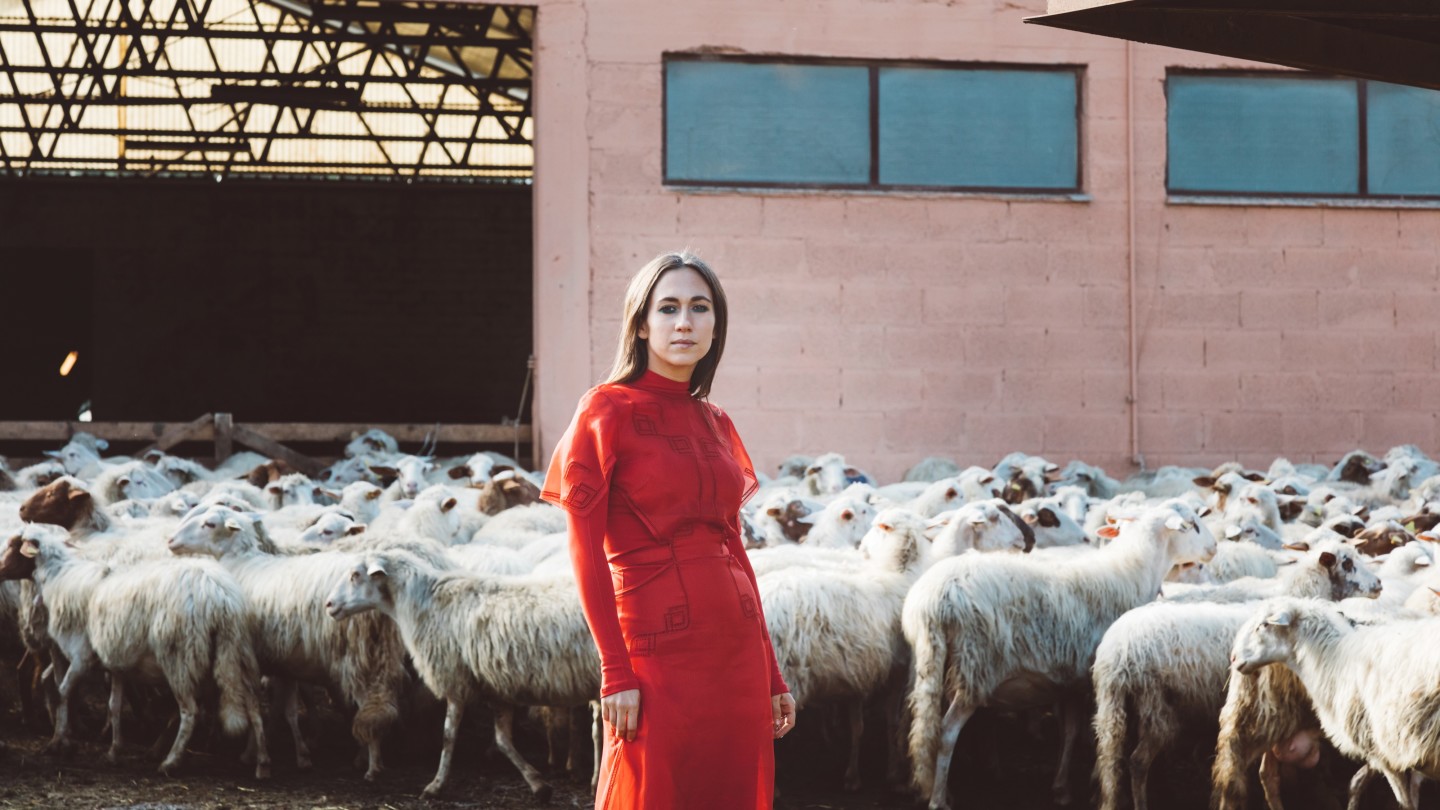
Simply sign up to the Style myFT Digest -- delivered directly to your inbox.
The jewellery designer Delfina Delettrez – petite, made-up and blown-out, wearing a vermilion mid-length voile-panel dress from Fendi’s spring/summer 2021 collection and a pair of vertiginous raffia heels – is standing in mud, cradling a damp, dirty lamb to her chest. Plucked moments before from a massive scrum of flighty sheep that have just been driven into a paddock on this farm north of Rome, the lamb vibrates with alertness. The trembling, Delettrez tells me, is normal for such a tiny new animal; this one was born the day before, and is still getting to grips with its neuromuscular system. Behind us, the hundred-strong herd bleats and bellows in full-throated cacophony. A photographer and her assistant hop from set-up to set-up, tripod and gels in tow; a pair of stylists coo over the other baby lambs capering in the paddock in between tracing fussy orbits around Delettrez with brushes and lip pencils. But Delettrez herself, her head bent to whisper into the lamb’s ear, seems to have momentarily forgotten any of the rest of us exist.
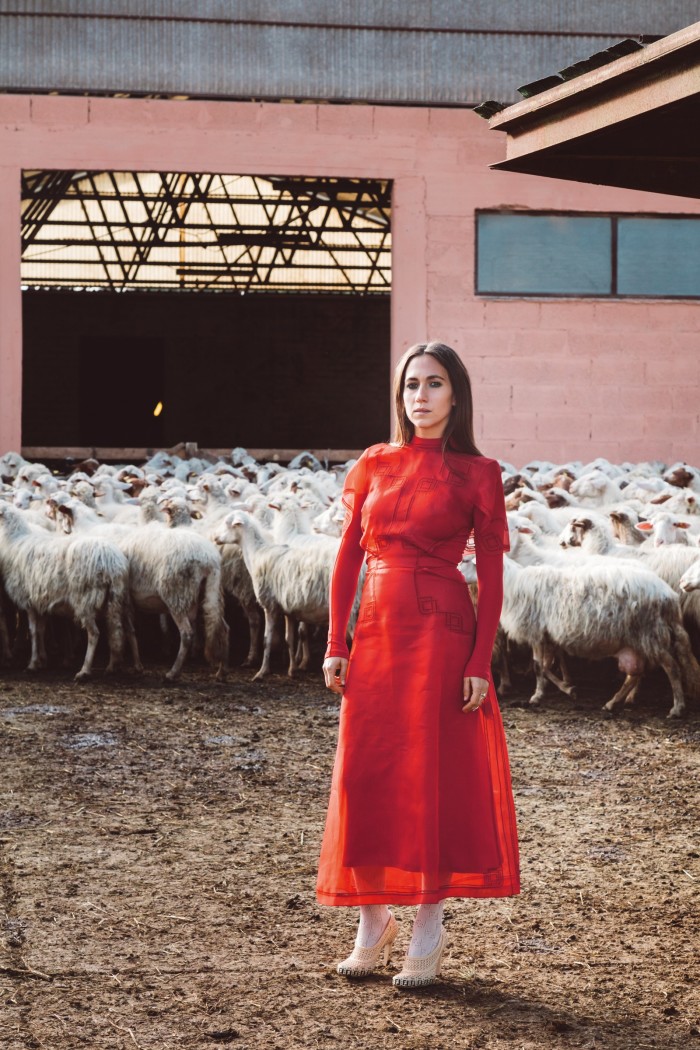
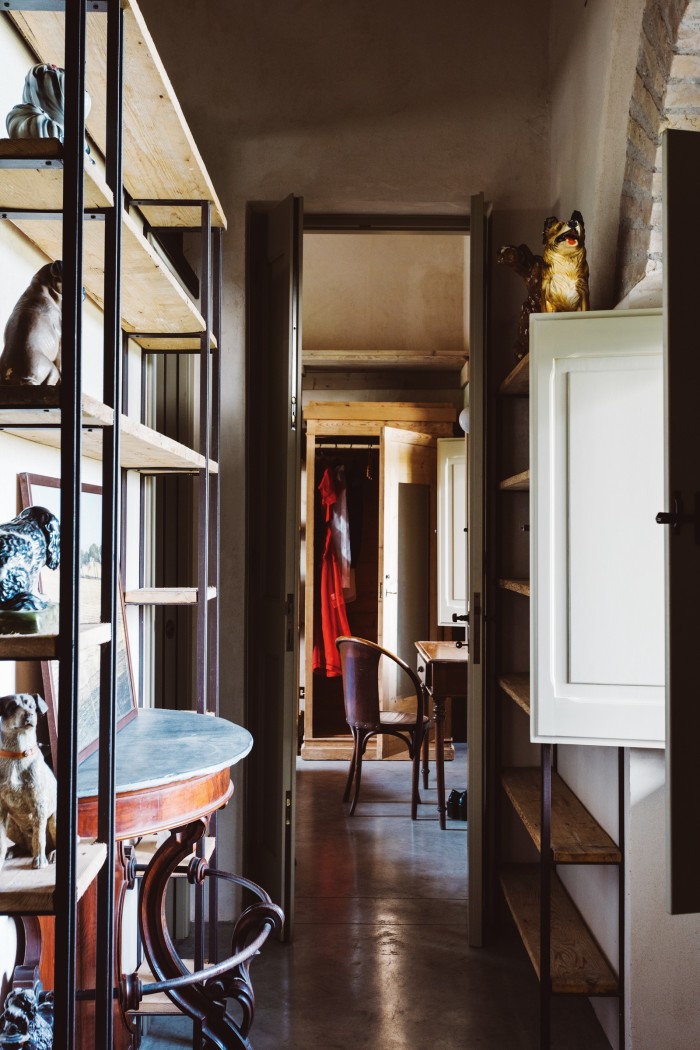
There is a modicum of cringe potential to this visual salvo: a fourth-generation Fendi (Delettrez is the 33-year-old daughter of the Roman house’s artistic director of accessories and menswear, Silvia Venturini Fendi) dressed to the nines for a portrait sitting on one of her family’s many properties. Accessorised with a token beastie in an attempt to confer a bit of country-life bona fides, the cynic might append. But portrait sittings rarely tell the full story. Delettrez, it turns out, actually knows farm animals, and farm life. The particular farm we are shooting on, I Casali del Pino, is a 100 per cent certified organic agricultural estate founded in 2003 by her aunt, Ilaria Fendi; a place whose 175 hectares – set inside the Parco di Veio nature reserve – Delettrez has roamed since she was a teenager. These days she, her partner, the artist Nico Vascellari, and her three children share one of the restored houses on the property with her mother, Silvia. The amphibious Gator tractor she roars around on when in residence is the vehicle on which she first learnt to drive. New sheep, old sheep, dirty and clean sheep; biodynamic produce, cheese and salumi production; firewood-gathering, fence-checking and copious woodland walking. All these are actual, non-photo-op components of Delettrez’s life here.
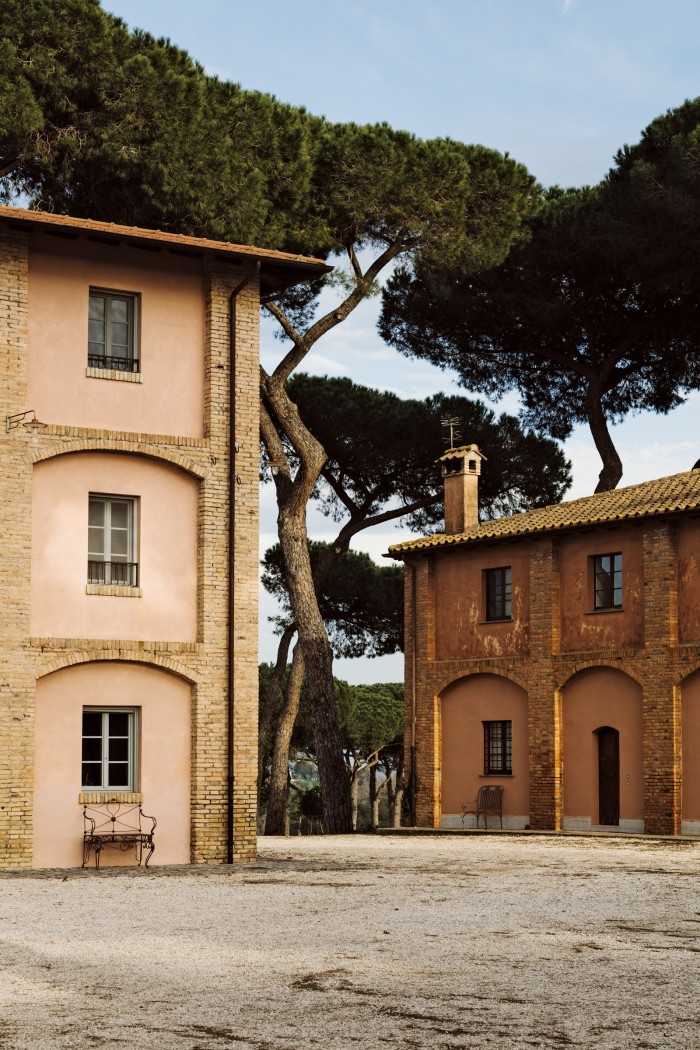
On a good traffic day, I Casali del Pino is only about a half-hour drive from the Colosseum; but its unalloyed natural rhythms and seasonal cycles are a world away from Delettrez’s professional milieu, which unfolds between Rome (where she collaborates with a workshop of some 30 metal and gem artisans, and lives in a loft-like flat in Ostiense, the city’s answer to Williamsburg) and Paris (where she has a pied-à-terre on the Place de Furstenberg). “This thing happens for me that the second I cross through the gate here, I actually feel my body relax,” she says. “Because we’re inside the reserve, it’s all completely protected. So very suddenly it looks like you’re in Tuscany – you go from a suburban road to seeing only fields and pines and cypresses. There are the farm animals, the pigs and the sheep” – Ilaria Fendi later tells me she keeps almost 1,000 of the latter on the estate – “but also deer, wild boar, foxes…”
The Casali themselves were formerly a borgo, inhabited by the employees of what was, a century and a half ago, a thriving tobacco farm. The building housing the restaurant – which on sunny Saturdays bustles with stylish young Romans out for some kilometro zero cuisine and open green spaces – was the drying warehouse. The Casa Cappella, where Delettrez and her extended family live at weekends, was the owner’s house. Above its cavernous deconsecrated chapel (in which she has been known to throw a blow-out party or two), there is a bedroom where the parish priest slept; the barest hint of incense still lingers in the air. Another holds at least half a dozen antique iron-and-wood children’s beds – cousins and friends of her children pile in for regular sleepovers. (“It’s like a bunk room – only beds in it. It’s kind of surreal and wonderful.”) The kitchen, its walls and floor clad in ornate ceramic tiling, still has its original hearth, which blazes against the bone-penetrating damp on the day we spend here together.
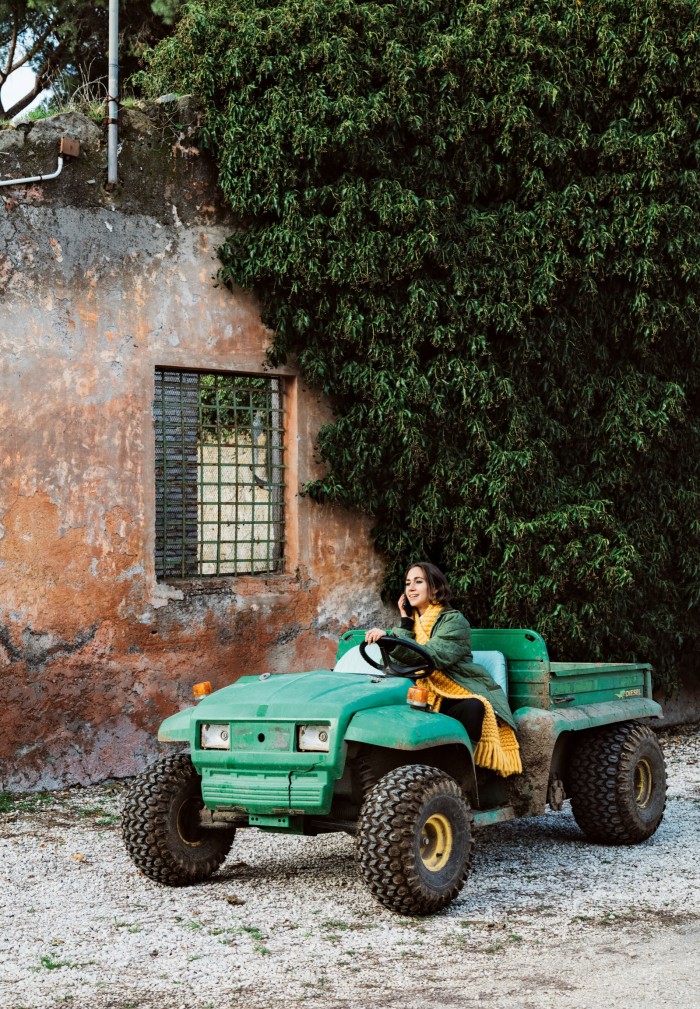
In non-Covid times, I Casali del Pino is also home to a country-house hotel; the 16 rooms are in a three-storey outbuilding where the tobacco-pickers would bunk. (“My daughter loves to stay in the hotel when we come,” Delettrez says. “For her, it’s a lot more fun being a guest.”) There is an on-site alimentari, selling the farm’s organic output of cheeses, meats and dried pasta and various sauces made with grains and produce grown in situ.
For Delettrez, I Casali manifests “the idea of subtraction, not addition” – the place where she peels away the constraints of her work week and replaces them with open hours and nature. “We sit for half a day in front of the fire. We take the tractor out and have a picnic by a beautiful river over the ridge beyond the farm, or a different lunch in a different wood every day. It’s one of the only places I can decide exactly how to use my time.”
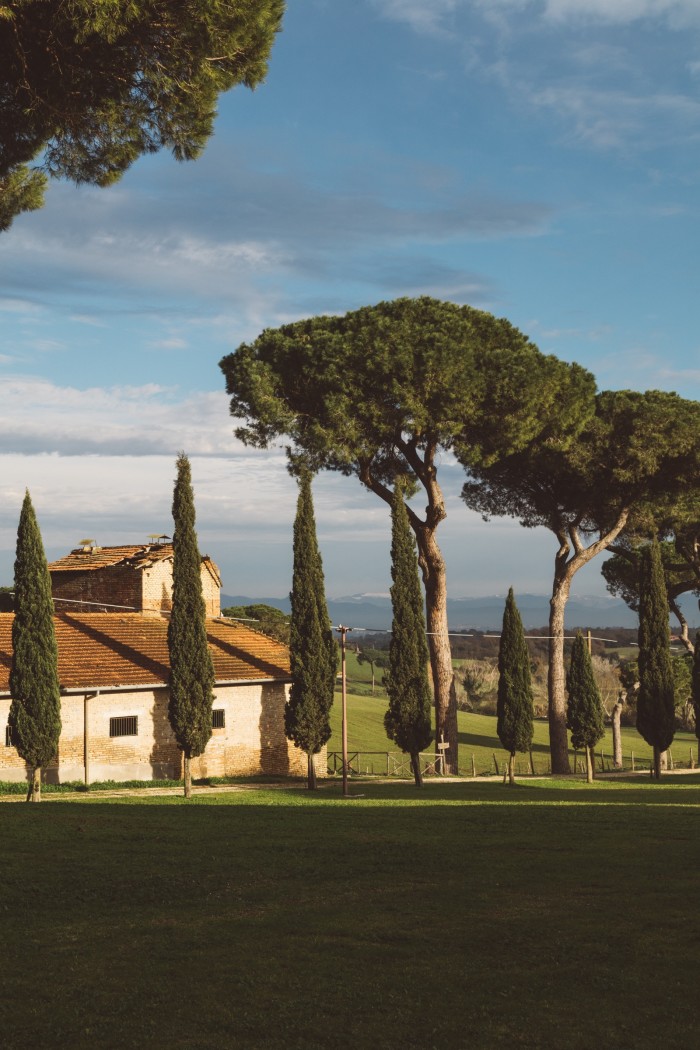
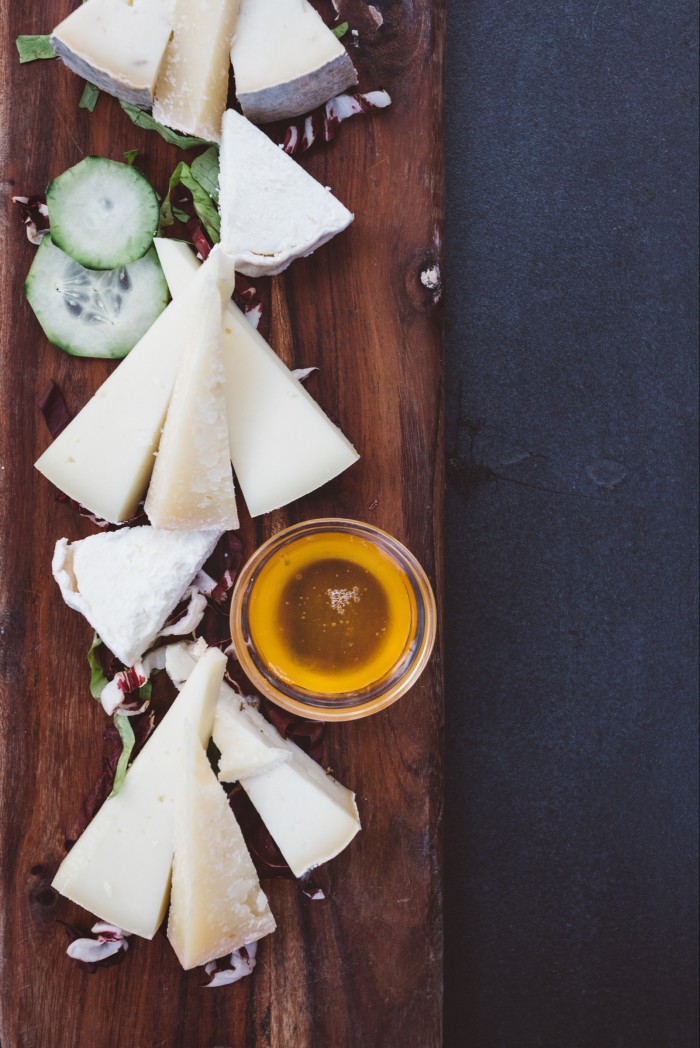
From the time Delettrez founded her eponymous line in 2007, themes of nature have underpinned many of her collections. Gemstone frogs cluster atop rings; tiny enamel caterpillars sit on delicate leaf pendants or earrings shaped from 18ct gold. Honeycombs and spiderwebs are imagined into striking statement necklaces. And there is no shortage of bones, skulls or allusions to memento mori. The Baroque has always permeated her designs. “The mystery of it attracts me,” she says. “I’m Roman, it’s a part of my culture.” Death, one of the Baroque’s abiding themes – and nature’s great equaliser – isn’t something she shies away from.
“I spent part of my childhood in Brazil,” she tells me. “I learned that nature can be scary. The insects are much bigger there, the colours are more acid. If you think about it, there is repulsion in nature, there is violence in it. There are a lot of shadows, and the shadows are always interesting to me. My parameters of beauty are constantly shifting. It doesn’t matter sometimes if something is [considered] pretty or ugly; if I respond to it, if it compels me, it’s interesting.”
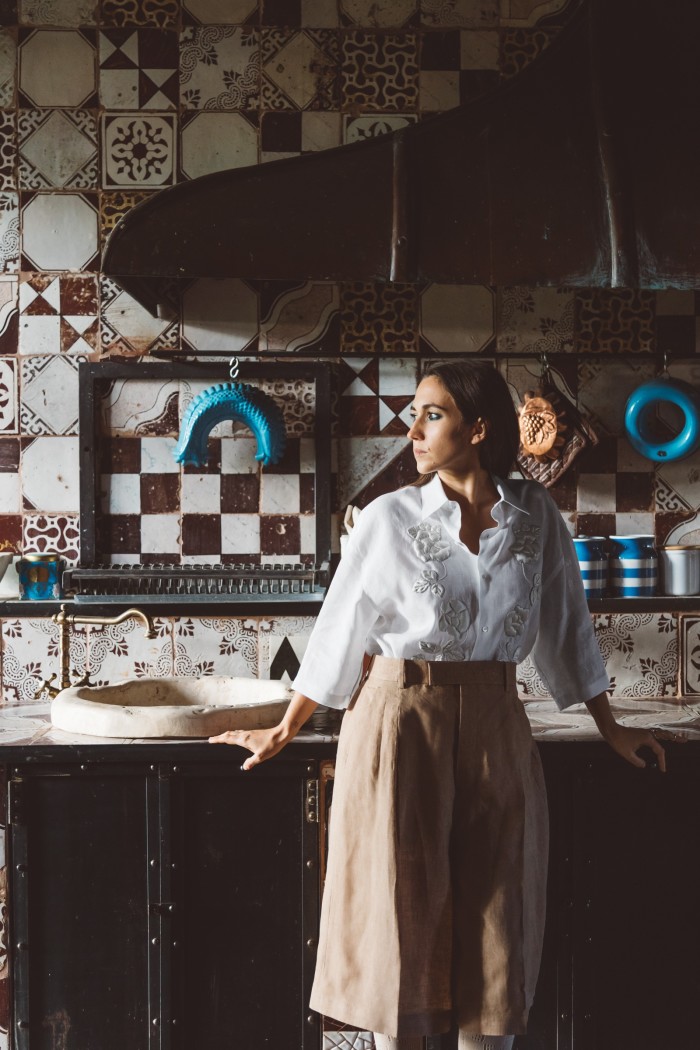
Recently, Delettrez has been engaging with these signal themes from a new platform. In December, Fendi’s new artistic director for couture and womenswear, Kim Jones, announced that Delettrez would be joining his team as creative director of jewellery. It’s a new role within the house (though not Delettrez’s first work for Fendi: she collaborated on a watch collection in 2016). She showed her first pieces on 27 January 2021 as part of Fendi’s maiden foray onto the January couture calendar (previously it only showed once annually, in July).
Delettrez characterises alta gioielleria as “total liberty, without having to think about serial production; basically, you’re creating artworks. Experimentation and art are the first points of order,” she says, in that order. (The privileges of her proximity to the brand aren’t lost on her; beyond conventional access to the historic company archives, she notes, “I have the good fortune to be able to walk into my mother’s and grandmother’s closets” for inspiration.) She collaborated closely with Jones: “In the collection, there’s this union of the two cultures: the England of Woolf, that Bloomsbury [aesthetic] that is a passion of Kim’s, and Rome. There was one image in particular from Virginia Woolf’s Orlando that really struck me, of a Russian princess who wears a pearl choker on her head instead of around her neck – a personal, eclectic choice. For me, it began from there.”
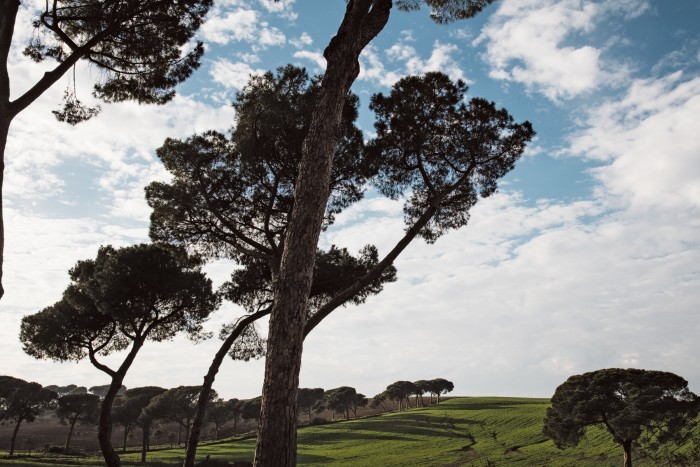
She feels largely unencumbered by the constraints of high jewellery’s orthodoxy. The absence of formal training has, in part, allowed her to gravitate to unusual material treatments, combinations and ideas in her own designs. The Delfina Delettrez signature engagement ring, for instance, conceals a diamond eternity band beneath another of solid metal. Nose and ear cuffs, laden with precious stones, are par for the course. For Fendi, she has experimented with material sleights of hand: Rome is evoked in the heaviness of marble, but the “stone” is really Murano glass, in some cases coated with resin – a technical innovation as well as a creative departure. “I wanted to unite that lightness… with a marble effect – [to create] ‘objects’ in marble inspired by marble sculpture, but they’re actually glass.”
In between sojourns in Venice to oversee the production of the jewels (“It was very dramatic, working with these Murano artisans with the city in this almost spectral state”), Delettrez has these past several months been collaborating with her brother, Giulio Cesare, to reinvent Villa Laetitia, the 25-room hotel on the River Tiber owned by her grandmother, Anna Fendi. Its distance from the centro storico’s crowds, its stile Liberty interior charms, and its old-world restaurant have won it a diehard fan contingent in the fashion world. The rooms – all unique and named for family members or collaborators – are dense with heirlooms, as well as Anna Fendi’s studio designs. The siblings are reconfiguring the Villa to serve a further function as a private members’ club. It will have its own bar, and the building’s beautiful glass conservatories have been commandeered for club use. “In many ways, it’s already so close to entertaining in a family home,” she says of the Villa. “Our clients know us, and we know them; some insist on the same room every visit. Every once in a while I’ll come to stay the night, and in the room I sleep in there’s a chest of drawers from my childhood. The room named after Giulio is full of things from his. The one named after Karl [Lagerfeld] is lined with his original sketches. Each space, each thing, tells a personal story.”
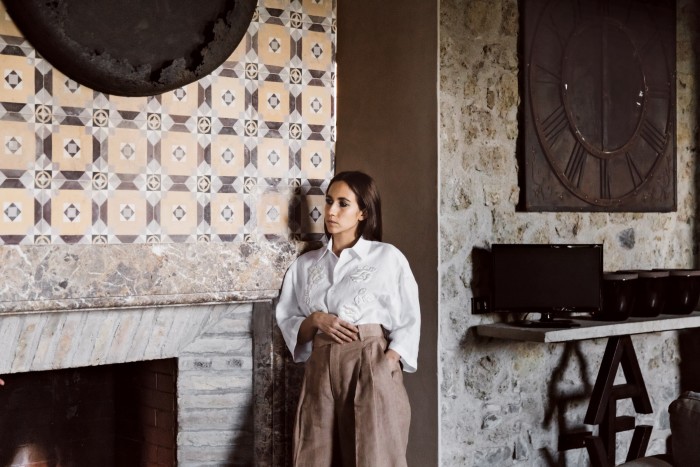
Back at I Casali, Ilaria Fendi has joined us at Casa Cappella for a late-afternoon lunch. Delettrez, long since changed out of her Fendi ensemble and into old trousers and Wellington boots, is handing around platters of sheep’s and goat’s milk cheeses and spicy salamis, all made just across the lawn at the alimentari. Pasta all’amatriciana, studded with glistening cubes of pig’s cheek, is ladled into bowls. Afterward, aunt and niece – Fendi leaning against the mantel, Delettrez seated on the stone ledge in front of it, arms wrapped around her knees – discuss the rigours of running a farm that adheres to Italy’s strict criteria for organic agriculture and animal husbandry, and the years of certification hurdles that required clearing; Fendi, a total neophyte in 2003, learnt as she went. They tell me about the ancient history of the region, which pre-dates the presence of their farm by almost 3,000 years; the Piazza D’Armi of Veii – where the Romans laid siege to, and ultimately defeated, the local Etruscan populace – is an easy walk from the house. The entire area is an architectural gold mine; the better preserved, Delettrez says, for being relatively unknown. “I think we” – the family – “feel a bit like the guardians of this place.”
Earlier, before the sun disappeared behind a wall of pewter cloud, Delettrez piled us all into the Gator’s truck bed and powered down a dirt road towards a canyon below the farm. At one point she braked abruptly and pointed to the ridge: an enormous boar was weaving along the edge of the treeline. A monumental stone arch – another Etruscan site – emerged from just beyond the slope. She cut the motor, hopped down and pulled up the chain link from around the grass in front of it, so we could come underneath for a closer look. The air was cold and restless; the bleating of the sheep in the paddock, far up the hill, carried faintly down. Somewhere above us, the huge boar fossicked for food. I thought about something Delettrez had said when we spoke earlier in the month: “Being able to spend my time exactly how I want to there – it’s like a material good, how satisfying it is. That place for me is the real concetto di lusso.”
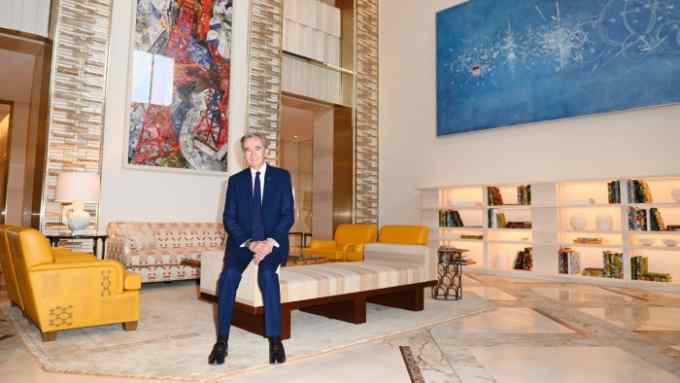
Comments